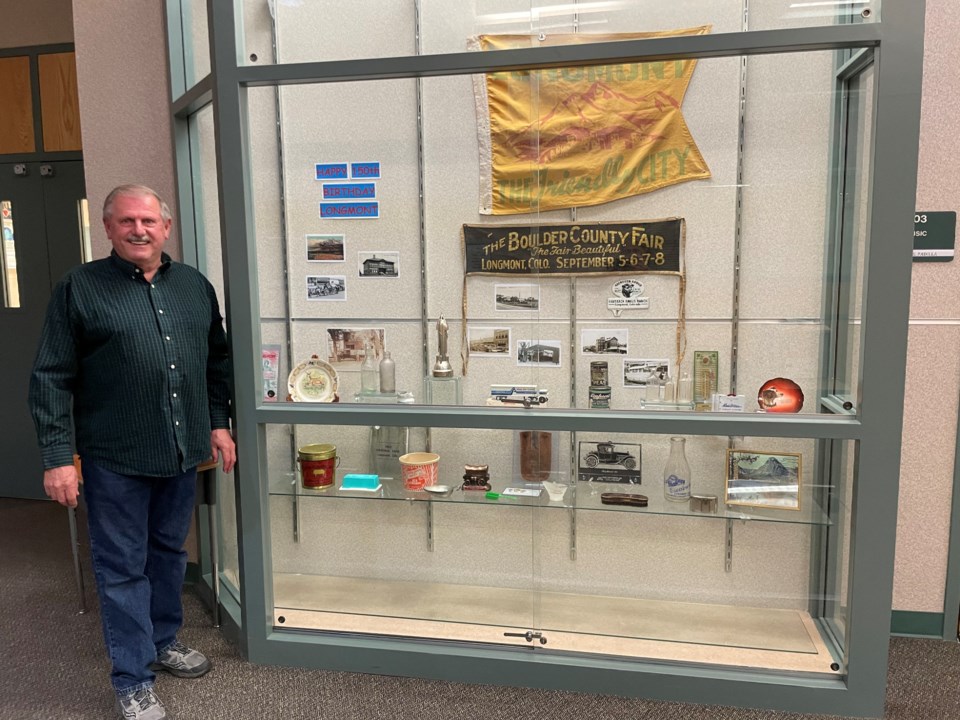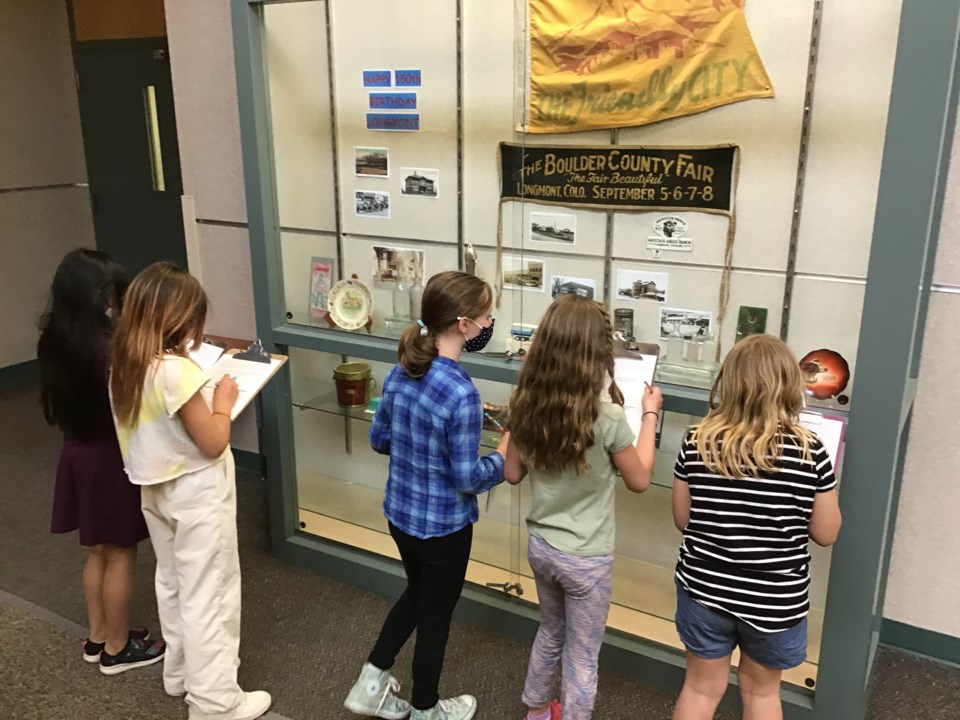Third grade teacher Kelly Dodds walks by the Blue Mountain Elementary School trophy case each day on the way to her classroom. Like many others, she passed it several times without paying much attention, until the pandemic had her looking at it in a new way — as an opportunity to bring artifacts to students.
The 2020-2021 school year has been a year of drastic changes for school-age children. Students across St. Vrain Valley School District have had to adapt to constant changes in learning styles from online-only to hybrid to in-person learning. Field trips, which are a great way for students to experience hands-on learning, Dodds said, have been canceled for the year.
“Since we can’t take a field trip, we thought we would bring a field trip to them,” Dodds said.
Third grade is the year students begin learning about Colorado history and Blue Mountain third graders typically go to the Longmont Museum or Old Mill Park “so that kids can start learning about their local history,” Dodds said.
This year Longmont is celebrating the 150th anniversary of its founding, an anniversary Dodds was excited to share with students. However, without being able to venture out for a field trip it made the task more difficult.
Luckily for the students, Dodds’ father, Rick Sinner, is a Boulder County historian who has collected business promotion artifacts for the past 50 years, Dodds said.
In his research, Sinner has focused on Boulder County businesses “because that is what my main collection is all about, all the giveaways and all the advertisements … that these businesses had,” he said.
Dodds visited her father and helped him choose about 40 Longmont artifacts she believed students would find interesting. They include a piggy bank in the shape of a rocketship, a book store advertisement with cute dogs, a shoe polish brush and a Valley Ice Cream container.
While students could not visit one of the usual places to learn local history, the items loaned to Blue Mountain for display in the trophy case might offer a glimpse into history most students never get a chance to experience.
Such advertisements and promotions are often discarded and then gone forever, Sinner said.
 Rick Sinner stands next to the Blue Mountain Elementary trophy case displaying some of his local history artifacts. Photo courtesy of Kelly Dodds
Rick Sinner stands next to the Blue Mountain Elementary trophy case displaying some of his local history artifacts. Photo courtesy of Kelly DoddsThe scavenger hunt quickly became a popular activity for teachers, staff members and students of every grade. It included questions such as “According to the Longmont flag, what is the official saying for Longmont?” and “How many different types of artifacts advertise a bank in the display?”
Students get to explore “what life was like back then compared to now and they are starting to understand a lot of the history of where we come from and where we are now,” Dodds said.
When Dodds asked students why they receive instruction in local history, she said students replied, “So we can understand about the first people who settled Longmont and we can understand some of the factories that used to be in Longmont.”
Students are able to compare a can opener that looks like a pair of scissors to what they can find in their kitchens. They also learned Longmont used to be the home of a cannery that produced canned peas.
One thing Dodds found students were most surprised about was the history of the Boulder County Fair. More than just an annual event with rides and games, students were interested to learn the fair began as an opportunity for the agricultural community to “buy and sell and show off their animals and (the) agricultural industry,” Dodds said.
In addition to Colorado history, third graders also are learning financial history. Using the several bank related artifacts in the case, Dodds said she took the opportunity to have a conversation about the banking system and how much items cost.
The Longmont history display has been at Blue Mountain for four weeks and will be taken down this week to make way for Dodds’ next display of her own rocks and minerals. Third graders also study rocks and minerals and, in past years, have visited the Denver Museum of Nature and Science. Other grades also study rocks and minerals, but in different ways.
“I thought it would be a kinda neat ‘field trip’ to bring to them,” Dodds said. “The whole school can benefit from (the rock and mineral collection) … and that might spark a conversation.”
While the idea was born because of the limitations created by the pandemic, Dodds said she hopes other teachers and staff at Blue Mountain consider filling the case in years to come to continue to “engage the kids.”
“I wanted to take something that could be a learning opportunity and create excitement,” she said.


